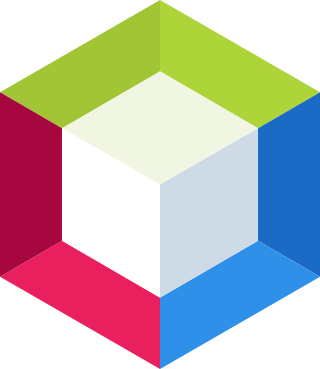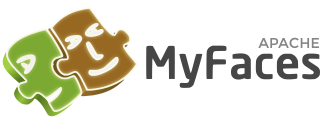
Jakarta EE, formerly Java Platform, Enterprise Edition and Java 2 Platform, Enterprise Edition (J2EE), is a set of specifications, extending Java SE with specifications for enterprise features such as distributed computing and web services. Jakarta EE applications are run on reference runtimes, that can be microservices or application servers, which handle transactions, security, scalability, concurrency and management of the components they are deploying.
The Jakarta Project created and maintained open source software for the Java platform. It operated as an umbrella project under the auspices of the Apache Software Foundation, and all Jakarta products are released under the Apache License. As of December 21, 2011 the Jakarta project was retired because no subprojects were remaining.

NetBeans is an integrated development environment (IDE) for Java. NetBeans allows applications to be developed from a set of modular software components called modules. NetBeans runs on Windows, macOS, Linux and Solaris. In addition to Java development, it has extensions for other languages like PHP, C, C++, HTML5, and JavaScript. Applications based on NetBeans, including the NetBeans IDE, can be extended by third party developers.

WebObjects was a Java web application server and a server-based web application framework originally developed by NeXT Software, Inc.
Jakarta Faces, formerly Jakarta Server Faces and JavaServer Faces (JSF) is a Java specification for building component-based user interfaces for web applications and was formalized as a standard through the Java Community Process being part of the Java Platform, Enterprise Edition. It is also an MVC web framework that simplifies the construction of user interfaces (UI) for server-based applications by using reusable UI components in a page.
Apache Wicket, commonly referred to as Wicket, is a component-based web application framework for the Java programming language conceptually similar to JavaServer Faces and Tapestry. It was originally written by Jonathan Locke in April 2004. Version 1.0 was released in June 2005. It graduated into an Apache top-level project in June 2007.
Apache Velocity first released in April 2001, is a Java-based template engine that provides a template language to reference objects defined in Java code. It aims to ensure clean separation between the presentation tier and business tiers in a Web application.

TurboGears is a Python web application framework consisting of several WSGI components such as WebOb, SQLAlchemy, Kajiki template language and Repoze.
Eclipse Jetty is a Java web server and Java Servlet container. While web servers are usually associated with serving documents to people, Jetty is now often used for machine to machine communications, usually within larger software frameworks. Jetty is developed as a free and open source project as part of the Eclipse Foundation. The web server is used in products such as Apache ActiveMQ, Alfresco, Scalatra, Apache Geronimo, Apache Maven, Apache Spark, Google App Engine, Eclipse, FUSE, iDempiere, Twitter's Streaming API and Zimbra. Jetty is also the server in open source projects such as Lift, Eucalyptus, OpenNMS, Red5, Hadoop and I2P. Jetty supports the latest Java Servlet API as well as protocols HTTP/2 and WebSocket.

Apache MyFaces is an Apache Software Foundation project that creates and maintains an open-source JavaServer Faces implementation, along with several libraries of JSF components that can be deployed on the core implementation. The project is divided into several sub-projects:
The front controller software design pattern is listed in several pattern catalogs and is related to the design of web applications. It is "a controller that handles all requests for a website," which is a useful structure for web application developers to achieve flexibility and reuse without code redundancy.

Apache Sling is an open source Web framework for the Java platform designed to create content-centric applications on top of a JSR-170-compliant content repository such as Apache Jackrabbit. Apache Sling allows developers to deploy their application components as OSGi bundles or as scripts and templates in the content repository. Supported scripting languages are JSP, server-side JavaScript, Ruby, Velocity. The goal of Apache Sling is to expose content in the content repository as HTTP resources, fostering a RESTful style of application architecture.
In computing, Facelets is an open-source Web template system under the Apache license and the default view handler technology for Jakarta Server Faces. The language requires valid input XML documents to work. Facelets supports all of the JSF UI components and focuses completely on building the JSF component tree, reflecting the view for a JSF application.
Apache Click is a page and component oriented web application framework for the Java language and is built on top of the Java Servlet API.
Java view technologies and frameworks are web-based software libraries that provide the user interface, or "view-layer", of Java web applications. Such application frameworks are used for defining web pages and handling the HTTP requests (clicks) generated by those web pages. As a sub-category of web frameworks, view-layer frameworks often overlap to varying degrees with web frameworks that provide other functionality for Java web applications.
Jakarta RESTful Web Services, is a Jakarta EE API specification that provides support in creating web services according to the Representational State Transfer (REST) architectural pattern. JAX-RS uses annotations, introduced in Java SE 5, to simplify the development and deployment of web service clients and endpoints.
AngularJS is a discontinued free and open-source JavaScript-based web framework for developing single-page applications. It was maintained mainly by Google and a community of individuals and corporations. It aimed to simplify both the development and the testing of such applications by providing a framework for client-side model–view–controller (MVC) and model–view–viewmodel (MVVM) architectures, along with components commonly used in web applications and progressive web applications.
Foundation is a free responsive front-end framework, providing a responsive grid and HTML and CSS UI components, templates, and code snippets, including typography, forms, buttons, navigation and other interface elements, as well as optional functionality provided by JavaScript extensions. Foundation is an open source project, and was formerly maintained by ZURB. Since 2019, Foundation has been maintained by volunteers.






